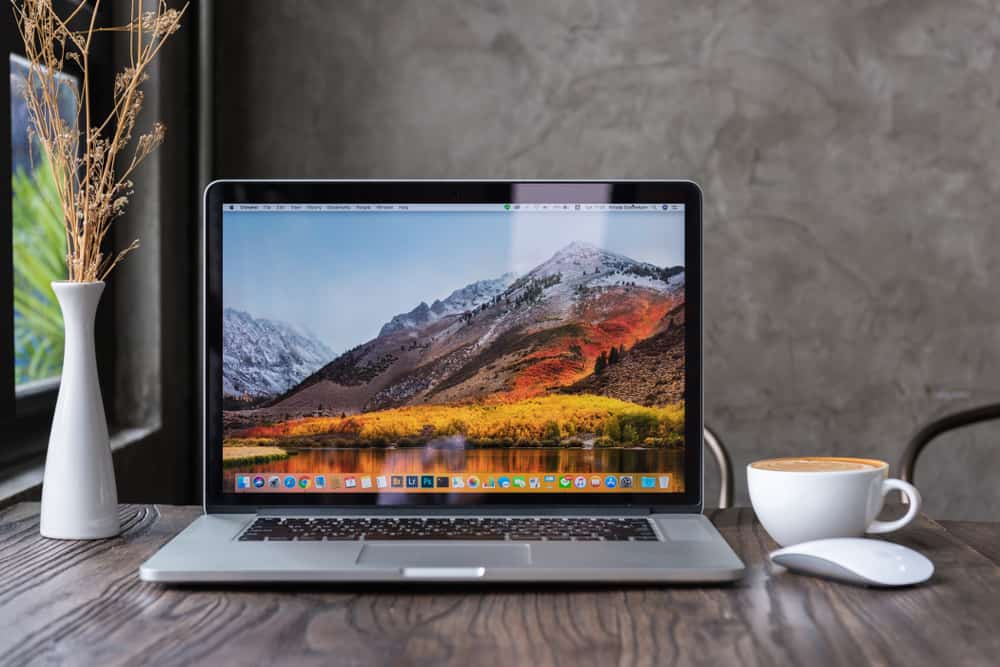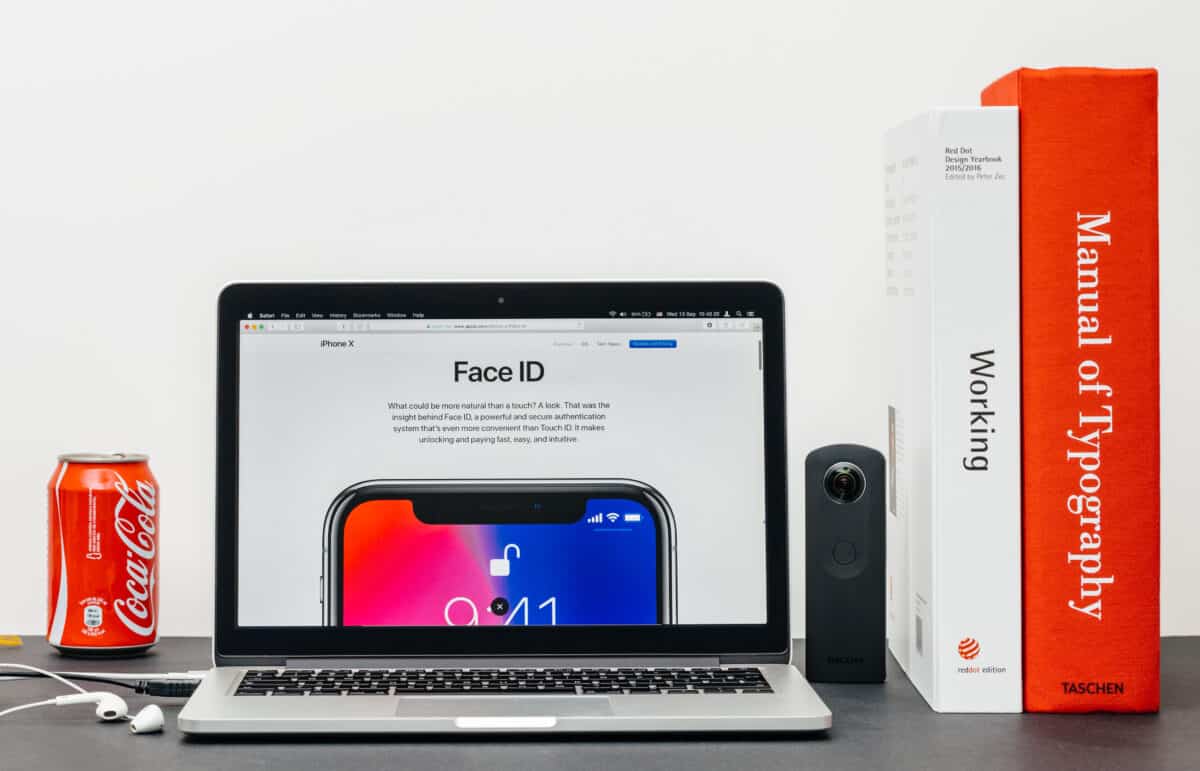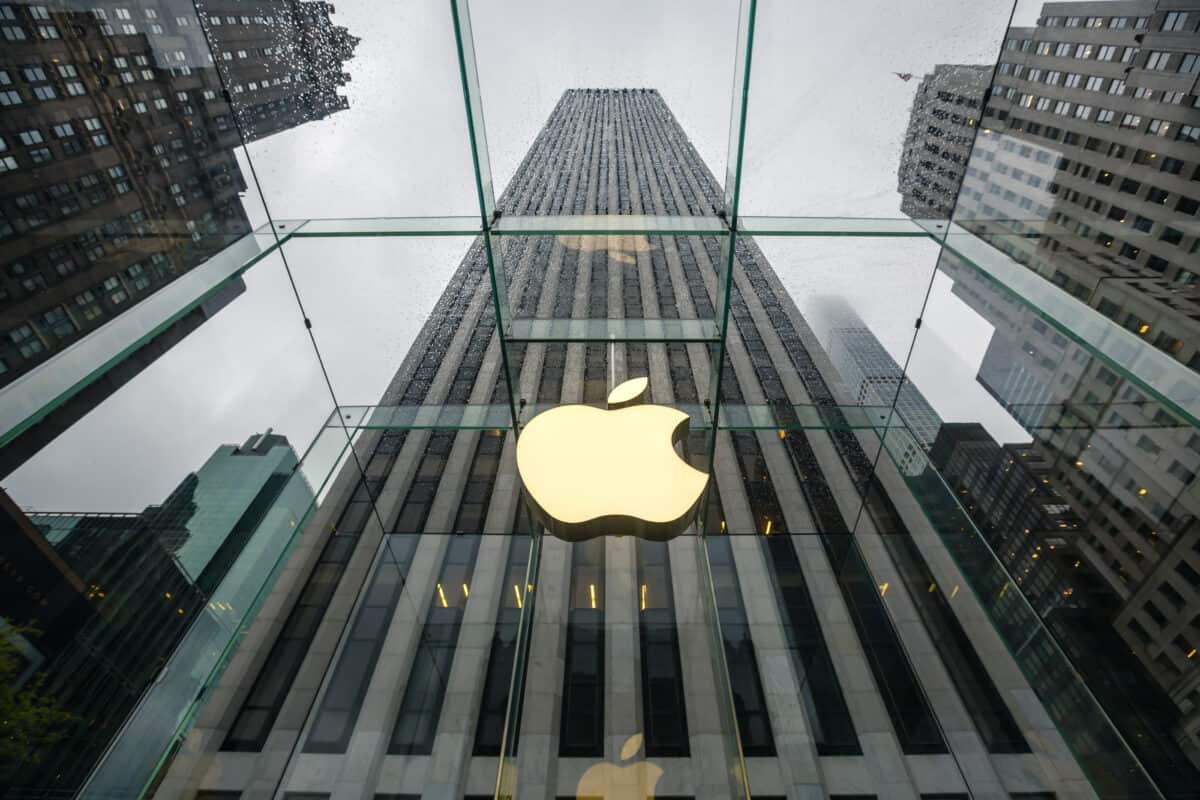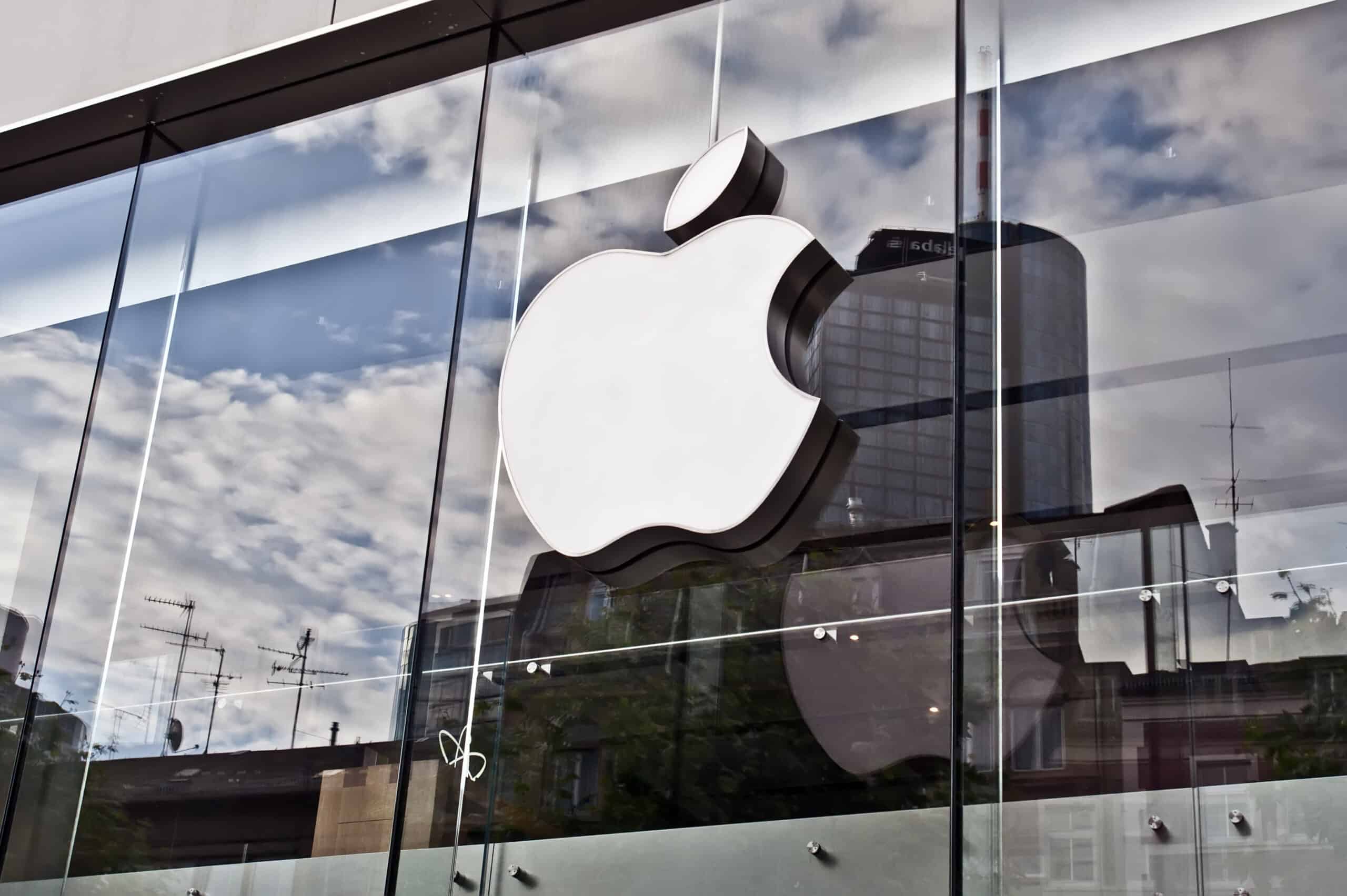For over 5 years, Apple’s MacBook has proven to be the only big tech product worthy enough to challenge the dominance of the PC. This Apple-branded laptop has been through many different versions, tried out various features, and experimented with plenty of groundbreaking ideas. Some have stuck, and others have faded away. But, when looking at the complete history of the MacBook, there’s no denying it: It’s a legendary product for the ages.
Unlike the iPhone, the MacBook has not had a history as simple as one new release a year, each improving on the one that came before. At various times, Apple has had three different versions of the MacBook on the market, all from different generations. It’s a lot more involved than you might think.
Quick Facts
- Release Date
- 10/01/2006
- Original price
- $1,999
- Units Sold
- N/A
For that reason, it’s worth outlining the history of the MacBook and all its various versions and updates. We’ll begin with some fast facts about the MacBook, then dive right into the history of the MacBook. From there, we’ll review each version of the Apple-branded laptop and the public’s response to the product.
Where to Buy the MacBook
If you’re in the market for a new or refurbished MacBook, you’ll be happy to know you can buy them online. Almost all the major online stores, from BestBuy to Amazon, sell them. Their prices depend on age, condition, and specs.
The History of the MacBook: What to Know
The MacBook is a brand name that encompasses three distinct Apple Macintosh notebook-style laptop computers. First introduced in 2006, they rely on Apple’s macOS operating system and exist to replace the now-extinct first family of Apple laptops: the PowerBook and the iBook. While consumers who visit the Apple Store today can only find the MacBook Pro and the MacBook Air, two separate versions of the MacBook base model have existed since 2006. However, both have since been discontinued.
In the early days, the first-generation MacBook and the MacBook Pro did not look all that different compared to the PowerBook or the iBook. All were housed in similar materials, all stuck to the same basic aesthetic… In truth, the biggest change was honestly the name. It wasn’t until 2008, with the introduction of the now-iconic unibody aluminum design of the MacBook Air, that the MacBook line became both technologically and aesthetically distinct from its predecessor.
At that time, the MacBook family adopted its signature black keyboard. Today, all MacBook keyboards also feature a backlight. A MacBook lid stays closed thanks to a small magnet housed inside the laptop’s body. While past MacBooks had accessible and removable internal components, present-day MacBooks glue or solder everything in place.
MacBook Versions: Each Edition

With the basics of the MacBook now established, it’s worth breaking down the three different versions of the Apple laptop and the changes they’ve undergone over the years. First released in January of 2006, with the most recent upgrade in July of 2022, there are eleven significant points on the timeline across the MacBook, the MacBook Pro, and the MacBook Air. Let’s review.
First Generation MacBook Pro
| Release Date | January 10th, 2006 |
| Price | $1,999 |
| Processor | Intel Core Duo |
| Key Features | Webcam, Apple Remote, Front Row, and iWeb software, MagSafe magnetic power connector, SuperDrive optical drive |
Announced as the replacement for Apple’s PowerBook G4, the first generation MacBook Pro made waves as the first Apple laptop to use an Intel processor. While its aesthetic design was quite similar to the G4, the Intel Core Duo processor made it worthy of upgrading. This was also the first Apple laptop to introduce the iSight webcam and the MagSafe charger.
Apple upgraded the first generation Pro later that fall, implementing Intel Core 2 Duo processors and increasing the total amount of memory to 2 GB. Another update came the following summer, with the addition of Nvidia Geforce 8600M GT video cards and LED backlighting for the Pro’s screen. Fall 2007 brought another upgrade, this time to the keyboard to make it fit more in line with the iMac. One final update in February of 2008 brought further changes to the processors and memory, as well as multi-touch to the trackpad.
First Generation MacBook
| Release Date | May 16th, 2006 |
| Price | $1,099 |
| Processor | Intel Core Duo |
| Key Features | Webcam, Apple Remote, MagSafe magnetic power connector, aluminum and polycarbonate unibody |
| Discontinued | February 2012 |
Whereas the MacBook Pro came to replace the PowerBook, the MacBook was introduced to replace the iBook. Upon this first introduction in 2006, many of the MacBook’s features were similar to those introduced with the MacBook Pro mere months earlier. The webcam, the Apple Remote, the Intel Core Duo processors, the MagSafe… They were all there, just like they were with the Pro.

Despite its similar technical makeup, the MacBook made significant aesthetic changes compared to the first-generation Pro and the iBook. From its glossy display to its new keyboard design to its magnetic latch, this first-generation MacBook set many visual standards for the MacBook Airs and Pros to come.
A 2008 upgrade brought this first-generation MacBook even more in line with future MacBooks with the introduction of aluminum unibody housing. One year later, Apple introduced a new version of the MacBook that swapped aluminum for polycarbonate and made further updates to the technical specs (including better memory and a bigger battery). This 2009 version remained the standard MacBook until its discontinuation in 2012.
First Generation MacBook Air
| Release Date | January 29th, 2008 |
| Price | $1,799 |
| Processor | Intel Core 2 Duo |
| Key Features | Thin design, removable media drive, optional SSD |
Branded as the world’s thinnest notebook upon its introduction in January of 2008, the first generation MacBook Air represented a real turning point for the MacBook line of products. Apple was no longer rebranding old products with new names and slightly different features. The MacBook Air — with its thin design, large trackpad and full-size keyboard, and removal of several once-essential ports from the MacBook and Pro lines — was an entirely new creation.
While this first-generation Air was only on the market for a couple of years, its impact was felt throughout all three versions of the MacBook. Its LED backlighting, multi-touch trackpad, and Nvidia GeForce graphics were so well-received that they eventually found their way to the MacBook and the Pro.
Second Generation MacBook Pro
| Release Date | October 18th, 2008 |
| Price | $1,999 |
| Processor | Intel Core 2 Duo; Intel Core i5 and i7 |
| Key Features | Aluminum unibody, Nvidia GeForce GPU, multi-touch trackpad, magnetic latch, Thunderbolt technology, FaceTime camera |
The differences between the first and second-generation MacBook Pro are drastic, to say the least. From the addition of the aluminum unibody enclosure to the new graphics cards to the battery and trackpad improvements, it felt like the MacBook Pro was finally brought into the 21st century.
Of course, even with the strength of this initial 2008 release, Apple made several tweaks in the following years. 2009 brought a 17-inch version and an improved lithium polymer battery. This same year the 13-inch unibody MacBook was also rebranded as a Pro. A 2010 update added Intel Core i5 and i7 processors, larger memory, better graphics, and even greater battery life. One final upgrade added an even larger memory in 2012.
Second Generation MacBook Air
| Release Date | October 20th, 2010 |
| Price | $999 |
| Processor | Intel Core 2 Duo; Intel Core i5 and i7 |
| Key Features | Tapered design, MagSafe 2, standard SSD, backlit keyboard, FaceTime camera |
With its second generation, the MacBook Air became much closer to the Air we know and love today. Adding the now-iconic tapered unibody design and cutting the price from the first generation by nearly half, the MacBook Air second generation also upgraded the MagSafe charger, the keyboard, the camera, and the battery life. It came in 11-inch and 13-inch versions, featuring a standard SSD for the first time in the Air’s history.
A 2011 upgrade introduced Intel Core i5 and i7 processors and improved graphics, keyboard, storage, and connectivity. The following year brought with it dual-core i5s and i7s, even better graphics, memory, and storage, and a FaceTime camera. Minor upgrades happened again in 2013, 2015, and 2017, each time making further tweaks to the processors, the graphics, the storage, and the memory. 2017 also saw the discontinuation of the 11-inch model, leaving only the 13-inch Air.
Third Generation MacBook Pro
| Release Date | June 11th, 2012 |
| Price | $2,199 |
| Processor | Intel Core i5 and i7 |
| Key Features | Retina display, standard SSD, HDMI, MagSafe 2 |
While much of the third generation MacBook Pro was indistinguishable from the latest upgraded version of the MacBook Pro second generation, there was one major difference: Retina display. Apple made SSD the standard for the Pro, implemented new MagSafe 2 technology, and added an HDMI port
the third generation Pro made the biggest change to the MacBook screen perhaps in the entire history of the line.
Retina display would quickly become the standard across all MacBook products, but it all started here with this third-generation Pro in mid-2012. The third generation Pro also did away with Ethernet and FireWire ports (though adapters could be purchased to bring these functions to the Thunderbolt ports).
A 2013 update brought further improvements to graphics, memory, and storage, as was clearly the standard for minor upgrades between generations. This upgrade also saw the chassis thinned slightly. Two years later, in 2015, Apple added Force Touch to the trackpad along with even greater improvements to graphics, memory, storage, and battery life.
Second Generation MacBook
| Release Date | April 10th, 2015 |
| Price | $1,299 |
| Processor | Intel Core i5 and i7 |
| Key Features | USB-C charging and ports, Butterfly keyboard, Force Touch trackpad |
| Discontinued | July 2019 |

If at first you don’t succeed, try again. This seems to have been the thinking behind Apple’s second attempt at bringing back the MacBook for a second time in 2015 after previously discontinuing the base model MacBook in 2012. Even though it would eventually be discontinued again in 2019, this second attempt at a middle ground between the Air and the Pro brought with it several important changes to the MacBook family that other versions would eventually adopt.
First announced in 2015 and bearing a striking aesthetic similarity to the recently upgraded MacBook Air from that same year, the second generation MacBook turned heads by doing away with MagSafe 2, USB ports, Thunderbolt ports, and HDMI output. It substituted a series of USB-C ports in their places and offered adapters for the former ports instead. It also introduced the now-standard Butterfly keyboard and Force Touch trackpad, which were soon implemented in the third and fourth-generation Pros. The Air would go on to take the Butterfly keyboard and substitute in USB-C ports.
Apple updated the second generation MacBook in 2016 and 2017, adding improvements to the processors, keyboard, memory, storage, graphics, and battery. However, that was it for this failed attempt at reviving the base model MacBook. But, it wasn’t a total failure: It showed that USB-C ports could effectively replace most other ports and that the Butterfly keyboard and Force Touch trackpad worked well, too. It was discontinued with little fanfare in 2019.
Fourth Generation MacBook Pro
| Release Date | October 27th, 2016 (Intel-based); November 17th, 2020 (Apple silicon) |
| Price | $1,499 |
| Processor | Intel Core i5 and i7; Apple M1 |
| Key Features | Touch Bar, Touch ID, USB-C, Butterfly keyboard, Magic keyboard |
After the MacBook Pro underwent a relatively subtle upgrade from second generation to third, it only makes sense that Apple would go big with the transition from third to fourth generation. This included the much-ballyhooed Touch Bar with Touch ID at the top of the keyboard, the removal of HDMI, MagSafe 2, and SD slots in exchange for USB-C ports, and the implementation of the Butterfly keyboard. Looking back, it represents one of the biggest changes from one generation to the next in the history of the MacBook.
An upgrade came in 2017, one year after its release. It improved graphics, storage, and processors, as one might expect from these now-annual MacBook updates. Both 2018 and 2019 brought tweaks to the Touch Bar, as well as the addition of extra Thunderbolt ports due to complaints about USB-C. 2019 also saw the outright removal of the Butterfly keyboard in place of a Magic keyboard, again due to user complaints.
In 2020, MacBook did away with Intel processors across the board. In their place, they implemented their own Apple-branded silicon. The Apple silicon-equipped fourth-generation Pro made its debut in November 2020, along with increased memory and storage space.
Third Generation MacBook Air
| Release Date | October 30th, 2018 (Intel-based); November 17th, 2020 (Apple silicon) |
| Price | $1,199 |
| Processor | Intel Core i5; Apple M1 |
| Key Features | USB-C, Touch ID, Retina display, True Tone display, Butterfly keyboard, Magic keyboard |
Similar to the fourth generation Pro, the third generation MacBook Air has two distinct versions: The one with an Intel-based processor, released in 2018, and the other with an Apple-based processor, released in 2020. It sounds hard to believe, but the release of this third generation marked eight years since Apple had done a serious overhaul of the Air. Needless to say, it was about time to bring the thing up to speed.
Adding a Retina display — which the base model MacBook and the Pro had been enjoying since 2015 — as well as Touch ID, USB-C ports, and the Butterfly keyboard, the MacBook Air had finally caught up to the rest of the MacBook versions. Weirdly enough, Apple removed the choice of an i7 processor, leaving users with the i5 alone. It did not matter, though, because two years later brought Apple’s M1 chip anyway.
Before that, they upgraded the fourth generation Intel-core just one more time: In 2019, they added True Tone display, upgraded the Butterfly keyboard, and improved battery, storage, memory, and graphics. Then, in 2020, they did away with the i5 for good and added in the M1. This 2020 update also saw the substitution of the Magic keyboard and a $100 price drop.
Fifth Generation MacBook Pro
| Release Date | October 26th, 2021 |
| Price | $1,999 |
| Processor | Apple M1 Pro and M1 Max |
| Key Features | Liquid Retina XDR display, 1080p FaceTime HD camera, MagSafe 3 |
The first generation of the MacBook Pro to come equipped with Apple silicon from the get-go, the fifth generation Pro was something of a return to form for the ever-popular MacBook model. No more Touch Bar, no more USB-C charging, no more Butterfly keyboard, and the return of the HDMI and SD ports, the MacBook Pro fifth generation effectively learned from its mistakes in several major ways.
Additionally, MagSafe charging was now back in the form of MagSafe 3. Plus, the Retina display underwent major renovations to become Liquid Retina XDR. Pair this with the super powerful M1 Pro and M1 Max chips (depending on the size), and the MacBook Pro fifth generation was clearly the most significant MacBook to date. (In a true full-circle moment, some have even compared the look of the fifth generation to the PowerBook G4 — the very Apple product the MacBook was invented to replace in 2006.)
Fourth Generation MacBook Air
| Release Date | July 15th, 2022 |
| Price | $1,199 |
| Processor | Apple M2 |
| Key Features | Liquid Retina display, 1080p HD camera, MagSafe 3, Magic keyboard, Touch ID, Force Touch trackpad |

After eight years of no new generations, Apple knew not to neglect the MacBook Air again. The fourth generation arrived in July of 2022, four years after the third generation debuted. (And two years after the introduction of Apple silicon in 2020.) Apple did the fourth-generation air a favor to make up for the many years without major structural changes. It’s the first MacBook model equipped with a super powerful M2 processor.
This generation of Air also gets MagSafe 3 charging and the Magic keyboard and Force Touch upgrades. Plus, it retains Touch ID and an improved Liquid Retina display alongside a 1080p HD FaceTime camera. Not to mention, it’s far thinner and lighter than all other Airs before it. While no updates have been announced yet, expect at least a couple to come in the years ahead.
- Handle heavy workloads on the go.
- Up to 20 hours of battery life on a single charge.
- Run all your favorite Mac applications on the go.
The Public’s Response to the History of the MacBook
Throughout the history of the MacBook, the MacBook family has been met with far more love than hate. The Pro and the Air have been almost universally beloved from generation to generation. The MacBook base model has never really been met with the same. This is evidenced by its double discontinuation. (Don’t expect to see a third try any time soon, but don’t be surprised if one eventually surfaces down the line. Apple is rarely one to turn down a challenge.)
The MacBook Air remains the thinnest and lightest laptop in the history of the MacBook, and it never sacrifices performance to retain its title. This is the biggest praise of the Air, year after year: It’s essentially the perfect laptop for the casual user. It has a powerful battery, a strong processor, a dependable memory, and an easy-to-use interface. Plus, it’s about half the price of the Pro at any given time. It’s an all-around great product, and it’s beloved by both users and critics.
On the other hand, the Pro has certainly seen criticism in its time. While never coming close to the failures of the MacBook base model, the Pro has made mistakes in the past. From the Butterfly keyboard to the Touch Bar to the over-reliance on USB-C, the difference between the Pro’s and MacBook’s mistakes is that the Pro isn’t afraid to make corrections. Whenever there is a faulty feature, the Pro is quick to fix it. This ultimately makes it just as deserving of praise as the Air. It takes big swings but doesn’t step off the plate when it misses. Throughout the history of the MacBook, they simply take another swing.
The image featured at the top of this post is ©206196790/Shutterstock.com.


